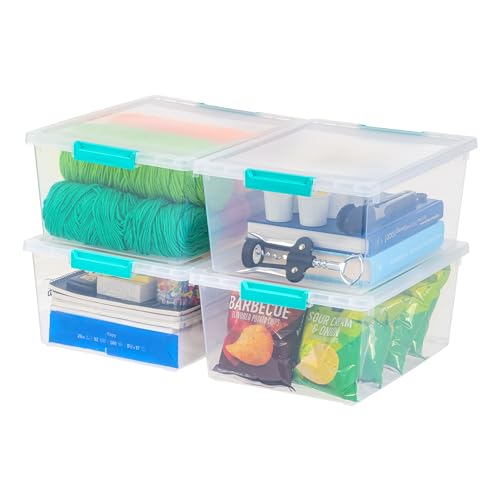
If you’ve ever been in your bathroom and spotted a tiny silver fish-like pest disappear under the kickboard, you probably just experienced a clear sign of a silverfish infestation.
Though these pests do not multiple at speed, infestations can be hard to wipe out.
Here, our pest control pro reveals how to identify the pests, what the five signs of a silverfish infestation are, and how these pests get into your home in the first place. It's the key to preventing it happening again.
5 signs of silverfish infestations
Paul Griffin, director of pest training and program development at Pest Authority says there are five clear signs to watch out for if you're suspicious of a silverfish infestation in your home.
These pests are between half and three quarters of an inch long, have a flat tapered body with three bristles and range from silver to gun metal gray.
Paul explains you might spot:
- The insects: You’re most likely to see silverfish running around at night or hiding in areas like closets, bathrooms and basements.
- Mysterious damage: Watch for damage to paper, books and clothes. You may notice chewed edges on your favorite novel, important paperwork, or even your stored winter sweaters. Silverfish are notorious for nibbling on anything containing starch or cellulose, so paper, cardboard, wallpaper, and even some fabrics are all fair game. Leaving lots out of storage can be a pest control mistake.
- Yellow stains or shedding scales: Silverfish leave behind small, yellowish stains or tiny scales where they’ve been. These marks often show up on books, papers, or near their favorite hiding spots. While subtle, they’re a big clue that silverfish are around.
- Droppings: These tiny black pellets resembling ground pepper are a classic sign of silverfish. You might find these droppings in the back of a drawer, along baseboards, or near boxes stored in damp spaces like basements or attics (learn to ventilate attics to reduce humidity).
- Increased activity in humid areas: Bathrooms, laundry rooms and basements are popular places to find silverfish in the home. These pests thrive in areas with higher humidity, so seeing more of them in these spots can be an indicator they’ve found their ideal environment and you could be in for a larger problem. Did you know there are plants can help banish condensation?

Joe Malinowski, vice president of pest management at Mosquito Authority and Pest Authority says silverfish are found throughout the United States, and are in a group similar to fabric and paper pests.
He explains, ‘They Look harmless enough, with their size between ½-¾ inches in length. They are wingless with a flattened body, somewhat shaped as a carrot with three long bristles or tails. As their name suggests, their coloration ranges from silver to gun metal with a metallic shine.’
Joe explains they are commonly mistaken for firebrats, a smaller paper pest with more of a muted, gray color and dark markings.
‘Silverfish have an incomplete life cycle that includes metamorphosis, egg, nymph and adult phases. Usually, from egg to adult happens in about four to six weeks, dependent of environmental issues like temperature, as silverfish thrive in conditions with temperatures between 72-90° Fahrenheit and a humidity range of 50-75%.'
How silverfish get into your home

Whilst it’s good news that the progression of an infestation may take some time, as a female lays only one to three eggs per day, once it is established, it can be a challenge to find effective ways to get rid of silverfish.
Joe adds that these pests hitch a ride on packaging to make their way into a home and are attracted to humid areas of the home including bathrooms, kitchens, basements, attics and crawl spaces. Learn how to reduce humidity across your home even without a dehumidifier.

Take the guesswork out of the equation and monitor your home's humidity in real time with this nifty little gadget. Keep your humidity levels below 50% to curb the conditions that help silverfish thrive.
What attracts silverfish

He says, ‘During the day, silverfish prefer to hide in cracks and crevices so they are most visible during the evening hours. Silverfish are usually brought into the home in cardboard boxes, old newspapers or magazines, rarely coming in from outside without a transportation method.'
It's one of the common ways many other insects get into the home, including cockroaches.
'Outside the home, silverfish may be found in high moisture areas, such as wood plies or mulch,' Joe adds. 'Once inside the home, they may be found in numerous places like bathrooms, bedrooms, attics, basements and garages. Skilled climbers, some silverfish can even infest a cedar shake shingle roof.’
Like most pests, silverfish end up indoors when looking for food, water, moisture and harborage, which is a place to have lay their eggs.
Joe adds, ‘Their primary food sources are paper, cellulose, starch and dead insects. Silverfish are less likely to thrive in a dry environment where humidity is less than 50%, and the temperature falls below 70 degrees. These pests love bathrooms and laundry rooms, although they will infest any room in a home or commercial facility.’
How to stop silverfish coming inside

Joe has a key tip, explaining, 'Inspect what you are bringing into the home carefully before letting it inside. Old books, boxes of family memories, photo albums and yard sale items can be prime transportation methods for silverfish.'
If they're already inside, you can try the following methods, as advised by Paul Griffin of Pest Authority:
- Reduce the humidity in the home through using a dehumidifier. H&G's home tech editor Dan Fauzi recommends the ToLife Dehumidifiers from Amazon which has a 95 Oz water tank and is budget-friendly.
- Look out for cracks in the interior of your house and seal them. H&G content editor Chiana Dickson and recommends the Gorilla waterproof and crack-proof sealant from Amazon, as it seals out moisture and water, is durable, won't yellow over time and can be used indoors and out.
- Keep silverfish food sources like old papers and clothing stored in airtight containers

Store your items in air tight bins that pests cannot get into to preserve their structural integrity, and limit food and harborage spots.
If those fail, Joe advises seeking pest control help from a pro. He explains, 'Once a silverfish infestation is established, it’s time to call a professional pest management company to rid the home or business of them. It takes proper identification, inspection, and seeking out potential moisture problems before developing a plan of attack to deliver proper control measures.'
With one of the main attractors for silverfish being humidity, learn the best place to put your dehumidifier for optimum operation.







